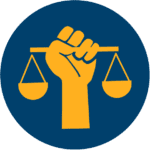Charles Brennan provided testimony in support of House Bill 24-1129, Protections for Delivery Network Company Drivers. CCLP is in support of HB24-1129.
Recent articles
CCLP testifies in support of TANF grant rule change
CCLP's Emeritus Advisor, Chaer Robert, provided written testimony in support of the CDHS rule on the COLA increase for TANF recipients. If the rule is adopted, the cost of living increase would go into effect on July 1, 2024.
CCLP testifies in support of updating protections for mobile home park residents
Charles Brennan provided testimony in support of House Bill 24-1294, Mobile Homes in Mobile Home Parks. CCLP is in support of HB24-1294.
CCLP’s legislative watch for April 5, 2024
For the 2024 legislative session, CCLP is keeping its eye on bills focused on expanding access to justice, removing administrative burden, preserving affordable communities, advocating for progressive tax and wage policies, and reducing health care costs.
News Release: CCLP & Hunger Free CO – Good news for Coloradans who need food stamps
FOR IMMEDIATE RELEASE
MEDIA CONTACTS:
Bob Mook
bmook@copolicy.org
303-573-5669, ext. 311
Ellie Agar
ellie@hungerfreecolorado.org
303-228-7973
DENVER (August 17, 2017) – More Coloradans who are facing difficult life circumstances and financial challenges will be able to keep their food stamp benefits under a recent set of rule changes unanimously approved by Colorado’s State Board of Human Services. Hunger Free Colorado and Colorado Center on Law and Policy (CCLP) have been coordinating with the state to adopt these new changes for more than a year.
Food stamps, federally known as the Supplemental Nutrition Assistance Program (or SNAP), ensure that people of all ages and backgrounds can buy groceries while they weather life storms. In addition, SNAP often serves as a short-term economic bridge. Most Colorado families and individuals who receive food stamps use them for 12 months or less, according to the USDA. Yet, Colorado ranks only 45th in the nation in SNAP access and lost out on more than $686 million in grocery sales due to a significant lag in SNAP enrollment. Currently, only three out of five eligible Coloradans are enrolled in the program, leaving 350,000 eligible-but-not-enrolled Coloradans struggling to access healthy food. Overly stringent work requirements are one of many barriers that may be keeping SNAP out of the hands of those who need it.
Currently, certain Coloradans on SNAP are subject to work requirements or mandatory participation in the Colorado Employment and Training program (known as Colorado Employment First) in order to get these benefits. Those without jobs who do not participate in Colorado Employment First are either limited to three months of food stamp benefits or sanctioned from the program for one or more months before they requalify. Often, these stringent requirements unnecessarily prevent Coloradans with difficult life circumstances from getting the food they need.
Recent federal guidance on SNAP has encouraged states to exempt a broader set of participants from work requirements for those who may not be physically or mentally able to work or participate in employment training, such as those who are experiencing homelessness. After several months of meeting and communicating with state officials, Hunger Free Colorado and CCLP helped Colorado to adopt the new rules.
Among the changes:
- People who are experiencing chronic homelessness are no longer subject to work requirements or employment training since their situation can directly impact their mental or physical ability to pursue and maintain employment. People enduring homelessness often lack transportation, contend with physical or mental illnesses, and by definition, suffer from a lack of stable housing. For many of these Coloradans, a disruption in food assistance benefits can intensify hardship.
- Individuals who are not fit to work can get an exemption from medical professionals such as physicians’ assistants, nurses, nurse practitioners, designated representatives of a physician’s office and licensed social workers. Previously, only physicians were allowed to grant such exemptions based on a patient’s ability to work. Expanding the types of providers who can verify someone’s unfitness to work will help many SNAP clients overcome an unnecessary procedural barrier to receiving food assistance benefits. Some people struggle to get appointments with physicians, and for many participants, a social worker serves as their main medical provider and is in the best position to verify someone’s fitness to work.
- People who reside with juveniles will not be subject to the three-month time limits on receiving SNAP benefits. This change aligns state policy with federal requirements, and more importantly, recognizes the role that household members have in supporting child development.
- Counties may now elect to operate a fully voluntary Employment First program for participants who are not considered “able-bodied adults without dependents.” This will save money and improve program integrity by focusing services on only the most work-ready cadre of participants.
“We applaud the Board for exempting Coloradans in difficult circumstances from requirements that prevent them from accessing the fuel needed to thrive,” said Kathy Underhill, CEO of Hunger Free Colorado. “These new rules will help tens of thousands of Coloradans maintain their food stamp benefits and receive the needed support to reach their human potential. It will also save taxpayers money by reducing the administrative costs associated with dis-enrolling and re-enrolling these individuals.”
“Clearly, SNAP is critical to reducing hunger and forging pathways from poverty in Colorado and nationwide,” said Claire Levy, Executive Director of CCLP. “We are thankful that the Board had the foresight to remove some of the barriers that could provide food for low-income Coloradans. Ultimately, these rules will reduce hunger, increase access to healthy and nutritious food, and invest in Colorado.”
Supporting SNAP improves our children’s and our state’s future. Almost 74 percent of SNAP participants in Colorado are families with children while almost 25 percent are families with members who are elderly or have disabilities. According to estimates from the Center on Budget and Policy Priorities, SNAP kept an average of 117,000 people out of poverty in Colorado – including 55,000 children – every year between 2009 and 2012. Additionally, Moody’s Analytics estimates that SNAP benefits pumped about $728 million into Colorado’s economy in 2016.
To learn more about food assistance and other human-service programs that support Coloradans’ health and well-being throughout their lives, visit the Human Service Gap Map, a joint project between CCLP and Hunger Free Colorado.
###
Colorado Center on Law and Policy is a nonprofit, non-partisan research and advocacy organization that engages in legislative, administrative and legal advocacy on behalf of low-income Coloradans.
Hunger Free Colorado, a statewide nonprofit organization launched in 2009, connects families and individuals to food resources and fuels change in systems, policies and social views, so no Coloradan goes hungry. By leveraging the power of collaboration, innovation and partnership, we eliminate barriers to the access of affordable, nutritious food, so all Coloradans can thrive and reach their full potential. Learn more and take action at HungerFreeColorado.org.





